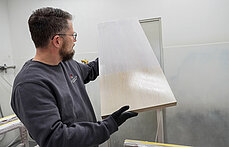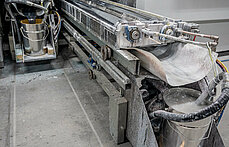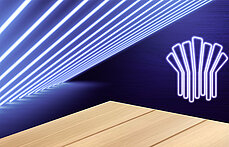
parquet stain WPB (color tone)
WPB parquet stain is a special stain ready for use for rolling and painting parquet surfaces and stairs. Light fastness special pigments largely cover the wood substrate, yet still achieve the desired stain character. The environmentally conscious stain was developed for parquet-specific working methods and is overcoatable with all products from the Hesse parquet range.
Enquire articlePage content
- Uniform stain appearance
- Easy to work
Processing
- water 97%
- mineral resources 1%
- fossil resources 2%
Areas of application
For parquet and wooden flooring with subsequent sealing. For staining and subsequent coating of furniture, stairs and doors in industrial and craft applications.
Technical information
Sustainability data sheet
Technical Specifications
| Appearance | not relevant |
|---|---|
| Number of layers (max) | 1 |
| Quantity per layers (min) | 50 g/m² |
| Quantity per layers (max) | 80 g/m² |
| Total quantity applied | 80 g/m² |
Processing Instructions
| Drying | 8 h / 20 °C |
|---|---|
| Surface sanding (grain size) | 80 - 120 |
| Intermediate sanding (grain size) | |
| Yield per pass | 14 - 23 m²/l |
| Processing information | Parquet: single application at 50 - 80 g/m² on properly laid wooden floors. The surface to be coated must be clean and dry. Carefully and evenly sand the parquet right into the corners. Sand old parquet floors back to bare wood, 120 grit with dust removal. Use a brush or lint-free roller, (e.g. short mohair – but use sticky tape to remove loose hairs before first use). Then immediately use a single-disc orbital sander and white pad to smooth out the surface and prevent deposits and irregularities. Large areas should be coated by 2 people. No further patches of damp stain should remain on the surface after smoothing. Rotation tracks left by the single-disc orbital sander indicate excesses of stain that need further smoothing. Replace the pad as necessary on large surfaces. The pad can be slightly dampened with water to facilitate distribution. Use a piece of pad to manually remove any excess in the corners.Furniture/staircases: apply the stain thinly and evenly by spraying, rolling or brushing. Allow a brief period for absorption and then use a fine sanding fleece to rub the stain in evenly until the surface appears dry. Occasionally use a cotton cloth to remove any excess as necessary. The surface can be coated as desired after drying for 16 h / 20 °C room temperature. The stained surface’s drying time can be shortened using suitable drying methods (e.g. a jet drier). |
| Special notes | All stains from the same range can be mixed with one another. Can be tinted with colour concentrates in the range: < 5 % BP30xx, BP 3570. Lighten by adding: WPB 1000. |
Procedure example
Our technical information is continually adapted to keep up to date with the latest technology and statutory regulations. The latest version is always available online at www.hesse-lignal.de or talk to your local account manager. This information is for advice and is based on the best knowledge available and careful research in line with the current state of the art. This information cannot be held as legally binding. We also refer you to our terms and conditions of business. Safety data sheet is provided in accordance with EC regulation no. 1907/2006.








